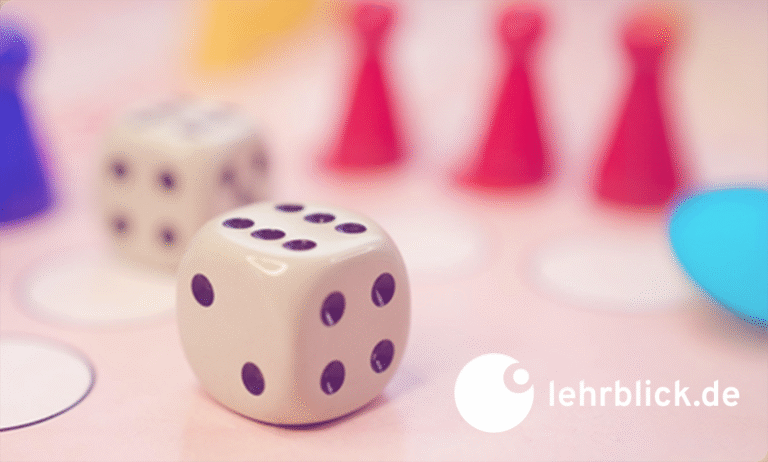Learning myths are very common. Many of us have done some brain jogging at some point or put our hopes in eating nuts and raisins. This post deals with three myths that postulate deficits in learners and can thus quickly lead to didactic dead ends: stultification, hemispheric dominance and attention deficits.
Myth 1: Students are becoming increasingly stupid
Being a teacher is no walk in the park. Even as far back as 3000 BC, frustrated Sumerians recorded their resentments about young people on clay tablets, complaining that they no longer respected their elders, were in the mood for revolution and were unwilling to learn. Little about this assessment has changed over the past 5000 years (Gilfert, 2015). It is particularly lecturers that already have several years of teaching experience under their belts that are often firmly convinced that when they were young, students were more willing to learn than they are today. Things that used to be a matter of course aren’t anymore. And to top it all, you’ve got the allegedly lazy Gen Z to boot.
Evidence: Even though stupidity is still not a scientific topic to date, psychologists over the past 130 years have done extensive research on its counterpart, intelligence, and have actually established changes between the generations in the process. Just not in the way we expected: something called the Flynn effect shows that the average IQ rose continuously in the western industrial nations up until the 1990s. Since then, the score has largely stagnated, with a few studies showing a slight drop. One meta-study using intelligence data from the last 100 years (Pietschnig & Voracek, 2015) confirms an extenuated increase in intelligence over the past three decades. The causes of the increase, stagnation and decline have not yet been clarified by science.
There are numerous words in existence for limited mental capacity, such as fool, moron or idiot. The etymology of the Ancient Greek idiotes offers an interesting approach to the problem: an idiot is someone who has no access to general knowledge due to lack of schooling. This can be applied to the grievances of many – mostly older – lecturers today: the students know less and less of what the lecturers themselves deem to be general knowledge. This now brings us to the core issue of why we can only learn certain things with the help of a teacher rather than by reading a book: learning becomes difficult in areas where it questions things that have previously gone without saying. The fact that the earth we are standing on looks like a flat surface in daily life and not like a sphere, for example. And this problem of things supposedly going without saying applies not only to learning but also to teaching: any expert who has already gathered a great deal of experience in their own subject has recourse to a far greater amount of subject-related information that goes without saying. When it comes to teaching, however, that is not such a good thing, as things that go without saying often go hand in hand with our bad habit of not being able to explain them well – and in our eyes, of course, we don’t have to explain them either as they go without saying. Accordingly, experts frequently fail in their attempts to explain to their learners what are supposedly the simplest things, and frequently and unjustly attribute this failure solely to the ever-decreasing mental capacities of the learners.
It might do the academic world some good to revise the inflammatory word “stupid”, as sometimes apparently “stupid” questions can even be an important path to scientific progress – a path that established experts can no longer see or no longer want to see due to their entrenched way of looking at things.

Myth 2: Only one brain hemisphere for each person
The brain is considered the most complicated object in the universe, but we use it more or less constructively every day nevertheless. A successful life is often directly associated with the ability to use our own brains as efficiently as possible. Accordingly, it is frustrating for many achievement-orientated learners to hear that they allegedly only use one of the two halves of their brain and can therefore only do certain things well and not others, as they simply lack the correct half of the brain to do them. Incidentally, men are only allowed to use the rationally analytical left hemisphere and women the emotionally creative right hemisphere. For a comparatively small fee, shrewd neuro coaches have developed allegedly scientific techniques to synchronise the two brain hemispheres using gymnastics and logic problems and thus to actually double our brain capacity. Despite the lack of scientific evidence to support it, brain jogging has grown into a huge market since the early 2000s – not least due to older people’s fear that they will be left behind in their professional lives or fall prey to dementia.
Behind the myth that brain capacity can be increased is the meta-myth that “the brain is a computer” and, along the lines of technical memory solutions, has its own distinct area for each cognitive function. However, empirical brain research shows that numerous areas of the brain all work together for practically all mental processes and even that this takes place in both hemispheres and not just one, though to a different extent in each. It therefore makes sense to speak of a meta-myth here, as this myth extends to all areas of our private and working lives and, as with all “normal” myths, conveys the following information: for us, the world follows a common, intuitive order.
Evidence: Unlike the eyes, lungs and kidneys, the brain is not a perfectly symmetrical organ. In patients suffering from a severe form of epilepsy in the 1960s, the connection between the two hemispheres was cut. Psychological studies of these split-brain patients show that the separate brain hemispheres process information differently (Sperry, 1961). The assignment of specific tasks to one or the other hemisphere has not been genetically established, however. In fact, even at an advanced age, a brain hemisphere can still learn what until that point has only taken place in the other hemisphere – after a stroke, for instance, where parts of the brain have been destroyed. Fortunately, both hemispheres work together very intensively in our daily lives and do not let myths or alleged brain exercises distract them.
If learners see themselves as 50 per cent invalids in terms of the myth, this presumably not only affects their self-perception (“When I see numbers/emotions/works of art/formulae, I go blank!”) but also their choice of learning strategies. As with the myth of the visual, auditory and kinaesthetic learning type, a belief in the myth is bound to lead to learners handicapping themselves here as well by categorically ruling out certain learning activities and thereby effectively sabotaging themselves.
Conclusion: Our brain is not a vessel or a computer and it most certainly isn’t a muscle. Accordingly, it is not only that it does not draw much benefit from performing the highest possible number of similar, monotonous repetitions when doing brain gymnastics and brain jogging but that it is actually new and varied challenges that in fact benefit it. We therefore ought to distance ourselves from the motto “no pain, no gain”, as you can be pretty sure that headaches are not a sign of successful learning. Instead, our naturally curious brain even helps us voluntarily when we are learning by producing happy hormones when we solve problems successfully or when predictions we have made come true. Furthermore, some people prefer to think creatively while others tend to prefer thinking analytically. The reason for this, however, lies not in our genetics but in our socialisation and not least in the image we have of ourselves as a person with more creative or more analytical abilities, though the two abilities do not have to be mutually exclusive.

Myth 3: Changing methods every 10-15 minutes
Young people are said to have the attention span of a goldfish (nine seconds apparently). Psychological research seems to confirm this by showing that young people’s attention span has been constantly on the decline since 2012 (APA, 2023). What could be more obvious here than to fall back on Myth 1 and assert that young people are degenerating due to their excessive media consumption and that, as lecturers, we therefore need to gear our teaching more towards the magical 15-minute attention span? What people like to overlook here is (1) how often we can focus our attention with no problem for hours sometimes and without changing methods and (2) how much the world around us has changed since the first televisions and neon advertising were introduced. It is presumably more the other way round, namely, that the world is increasingly designed so that it can distract us better.
The path to the status quo: the world speaks to us. It is not only works of art but also everyday objects that practically call to us, saying “Pay attention to me!” This appeal, which is sometimes akin to a siren call, is generally described as anaffordance or stimulation (Gibson, 1982) and plays a large role in usability research, for example. The more that sciences like psychology discover about the mechanisms of attention, the more newspapers, online platforms and not least advertisers can design their tempting offerings in a way that grabs our attention.
Lack of evidence: In his analysis of the 15-minute myth regarding attention, Neil Bradbury (2016) conducted research on the genealogy of myths down a chain of citations going back almost 40 years, and was thus able to trace the “magical 10-15 minutes” back to a study published in 1978 (Hartley & Davies, 1978). The authors studied how the amount of notes taken during a lecture changed over the course of that lecture. It was established that the amount of notes taken declined after 10 to 15 minutes. In several publications, the authors themselves indicate that that one lecture was not representative and, furthermore, that making notes is not an indicator of attention. Apart from this study, there is no other empirical evidence to support the myth. For pop culture and media, on the other hand, 15 minutes seems to be a wonderful number, as Andy Warhol attracted media attention in 1968 by announcing, “In the future, everyone will be world-famous for 15 minutes”.
Conclusion: There is something magical about numbers, and where there is magic, myths will not be far away. Just like the myth that we only use 10 per cent of our brains, we are quickly brought back down to earth with a bump in this case as well. Our brain cannot be understood in the same way that you can understand a machine whose performance can be recorded in numbers and which only requires a bit of tuning for that performance to be multiplied. Through evolution, the brain is made for doing and not for acting as a quantitative storage medium. Boredom can be seen as an expression of this evolutionary conditioning. Here, lecturers often only look between the ears of the person in question to find the reason for the distractibility and not at the environment with its intense stimuli. Smartphones in particular work like little alarms, however, and constantly demand our attention.
New forms of teaching, such as problem-based learning and gamification, and also established teaching methods like think-pair-share and jigsaw take up this striving towards “doing” and thus foster brain-friendly learning.
Are these myths an obstacle to learning success?
Myths do not pose a risk for learning success until learners are so discouraged by them that they give up learning early on and do not start again because they allegedly have the wrong brain for such a task anyway. The same applies to lecturers: if believing the myths robs them of their last bit of hope that the learners in question might achieve success after all, they will give up trying to help those learners. There are probably very few learners indeed who are able to resist a lecturer’s assertion that they are not capable. This only results in self-fulfilling prophecies: “I didn’t try because it was never going to work, so I’ve proved that it didn’t work!”
In the last few years, research into belief in myths has fortunately shown that only a slight fraction of the numerous and common myths surrounding learning have a negative effect on the success of lecturers (Horvath et al., 2018) and students (Krammer et al., 2021) who believe the myths.
References
APA (2023). Speaking of Psychology: Why our attention spans are shrinking. https://www.apa.org/news/podcasts/speaking-of-psychology/attention-spans
Bradbury, N. A. (2016). Attention span during lectures: 8 seconds, 10 minutes, or more?. Advances in physiology education, 40(4), 509-513. https://doi.org/10.1152/advan.00109.2016
Gibson, J. J. (1982). Wahrnehmung und Umwelt. Der ökologische Ansatz in der visuellen Wahrnehmung. Urban & Schwarzenberg.
Gilfert. A. (2015). 5000 Jahre Kritik an Jugendlichen – Eine sichere Konstante in Gesellschaft und Arbeitswelt. https://bildungswissenschaftler.de/5000-jahre-kritik-an-jugendlichen-eine-sichere-konstante-in-der-gesellschaft-und-arbeitswelt/
Hartley, J., & Davies, I. K. (1978). Note‐taking: A critical review. Programmed learning and educational technology, 15(3), 207-224. https://www.tandfonline.com/doi/abs/10.1080/0033039780150305
Horvath, J. C., Donoghue, G. M., Horton, A. J., Lodge, J. M. & Hattie, J. A. (2018). On the irrelevance of neuromyths to teacher effectiveness: Comparing neuro-literacy levels amongst award-winning and non-award winning teachers. Frontiers in Psychology, 9, 1666. https://www.frontiersin.org/journals/psychology/articles/10.3389/fpsyg.2018.01666/pdf
Krammer, G., Vogel, S. E. & Grabner, R. H. (2021). Believing in neuromyths makes neither a bad nor good student‐teacher: The relationship between neuromyths and academic achievement in teacher education. Mind, Brain, and Education, 15(1), 54-60. https://onlinelibrary.wiley.com/doi/am-pdf/10.1111/mbe.12266
Pietschnig, J. & Voracek, M. (2015). One century of global IQ gains: A formal meta-analysis of the Flynn effect (1909-2013). Perspectives on Psychological Science. https://doi.org/10.2139/ssrn.2404239
Sperry, R. W. (1961). Cerebral Organization and Behavior: The split brain behaves in many respects like two separate brains, providing new research possibilities. Science, 133(3466), 1749-1757.
Suggestion of citation for this blog post
Aichele, T. (2025, May 15). Declining intelligence, goldfish and mental imbalance – Three myths about learning and learners. Lehrblick – ZHW Uni Regensburg. https://doi.org/10.5283/ZHW.20250515.EN

Dr. Thorsten Aichele
Dr Thorsten Aichele studied psychology and philosophy and did his PhD in instructional psychology in 2017. He has been responsible for running the further education programme in learning and teaching in higher education at the University of Würzburg in tandem leadership since 2022. In addition to didactic myths, he is also interested in gamification, the psychology of digital learning media, the philosophy of science and the utilisation of systemic psychotherapy techniques in university learning settings.





